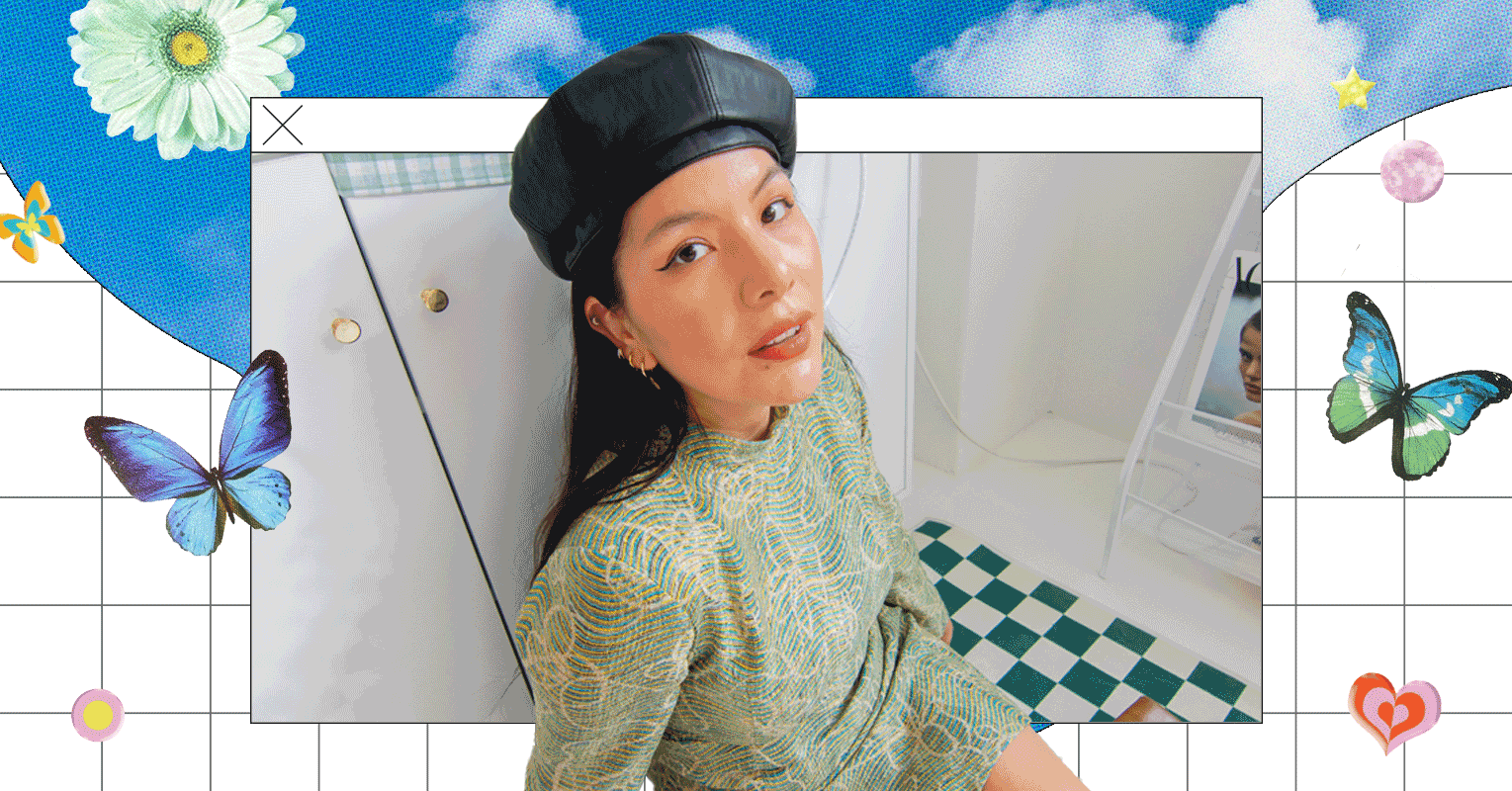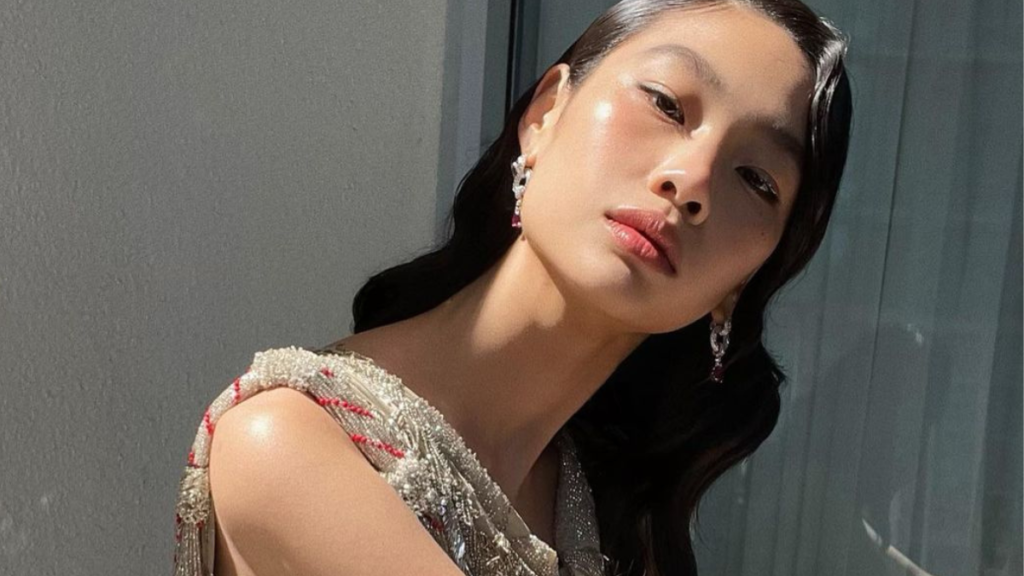Clothing is a part of everyone’s lives and is a way to express who you are at first glance. Most find their identities affirmed through their clothing and are finding innovative ways to do that every day. The clothing industry is one of the biggest in the world, but it has recently gained notoriety for normalizing unethical practices. Maintaining a stylish and abundant wardrobe while being mindful of your carbon footprint can be challenging, but don’t fret! EnVi has a guide on mindfully and sustainably navigating the clothing industry without sacrificing your desire for style.
Rise of Fast Fashion
Style is a quintessential part of Gen Z and how they express themselves. It is now easier and cheaper than ever to expand your wardrobe and keep up with the latest trends. Brands such as Shein, Fashion Nova, and Nasty Gal offer so many clothing options that are as affordable as they are stylish. A large demographic of influencers make content showing off hundred-dollar hauls of clothing from these companies without a second thought. The mindless consumption of clothing has been normalized and resulted in companies capitalizing on this phenomenon through whatever means necessary. But at what cost?
To keep up with the incredulous demand rate, retail companies have thrown caution to the wind and prioritized unethical and harmful business practices. The clothing from these companies are made in unsafe environments by underpaid and neglected work staff who are exposed to dangerous chemicals used to mass produce items and keep up with demand. The rise of this new business model is referred to as “fast” fashion and has resulted in major ramifications for the planet. The excess clothing produced is also often discarded and put in landfills that contribute to the rising levels of gasses and the climate rises. Textile production is currently responsible for 10-20% of pesticide use.
Gen Z’s Counter to Fast Fashion
Gen Z have popularized thrifting over the years to counter the effects of fast fashion. In 2022, 80% of Gen Z consumers indicated they would likely shop for secondhand items. It is so common now that when you ask a member of Gen Z where they got an article of clothing, the most likely response is, “Oh, I thrifted it.”
K-pop idols are included in this new trend as well. Keeho of P1Harmony went viral for a clip of him describing his jacket that fans were admiring. “I actually thrifted this jacket. Fun fact—it was $2,” Keeho said. This moment was very relatable and shows that even K-pop idols practice these mindful consumption methods and appreciate a good deal.
LISA of BLACKPINK shared her love of vintage shopping in the Netflix documentary BLACKPINK: Light Up the Sky (2020). In the documentary she took the viewer along with her on a visit to a small vintage store in South Korea, stating, “I love vintage clothes, so wherever I go, whether it be in America or anywhere else, I try to look for vintage shops.”
Des & Ren
Des & Ren are a YouTube duo that create lifestyle content about K-pop, including concert vlogs, merch hauls, and more. “We are just two best friends who love the joy that comes from K-pop. We love to share with others across the globe who also share the same interests as us!” Ren shared.
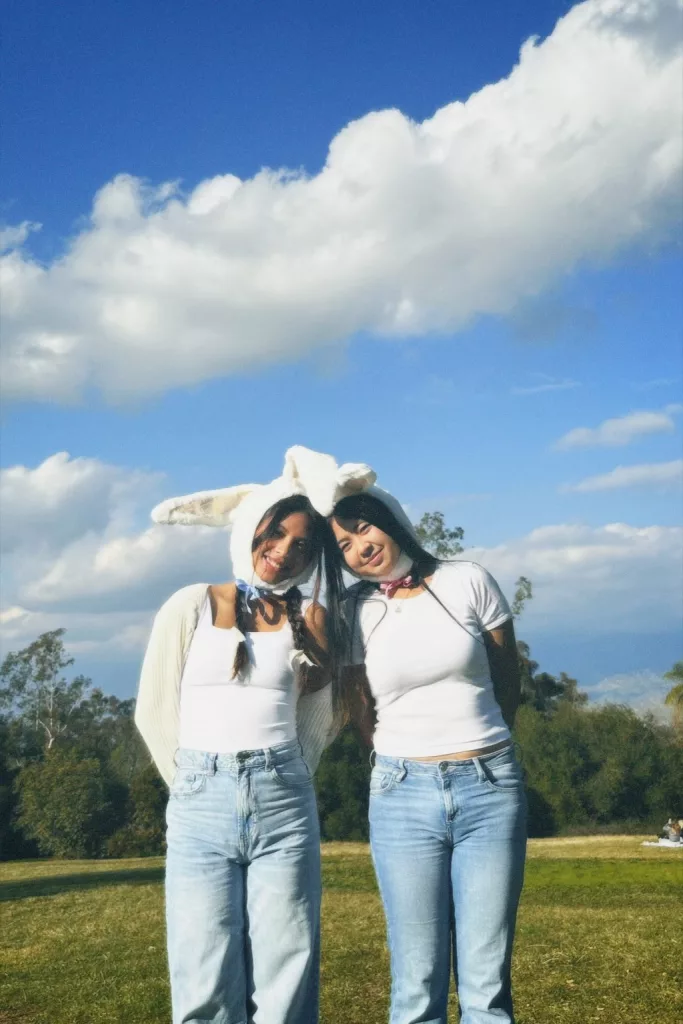
Discovering Style
When asked about their experiences shopping second hand, Des and Ren shared that thrifting has helped cultivate their personal styles. “Thrifting encouraged me to go out of my comfort zone and try to merge styles that I never would have thought of before and make it my own” Des stated.
Thrifting gives consumers access to clothing that they would not find in commercial retail. “We are doing our part to save the planet, but we are also exploring our creative side.” Ren exclaimed. You can completely transform a piece from what it once was into something that fits your style or aesthetic.
Affordable Alternatives
The duo have a series where they recreate outfits from their favorite K-pop idols and do so by going to local thrift stores. Ren touched on the financial benefits of thrifting stating “It is important to know that there are affordable alternatives to the expensive items that [K-pop] idols typically wear.” It is possible to dress like your favorite idols without having to break the bank nor participate in microtrends.
Trends are not a new phenomenon, but the fast fashion machine has accelerated the pace at which these trends go in and out of style. In the past trends have lasted for several years, but the shelf life of micro trends has decreased to less than a season. Des explained how thrifting prevents consumers from purchasing new items to keep up with micro trends that will go out of style quickly and most likely end up in landfills. Instead, thrifting encourages consumers to take a second look at trends from the past and decide if it suits their personal style.
YO’ HOMEGIRL
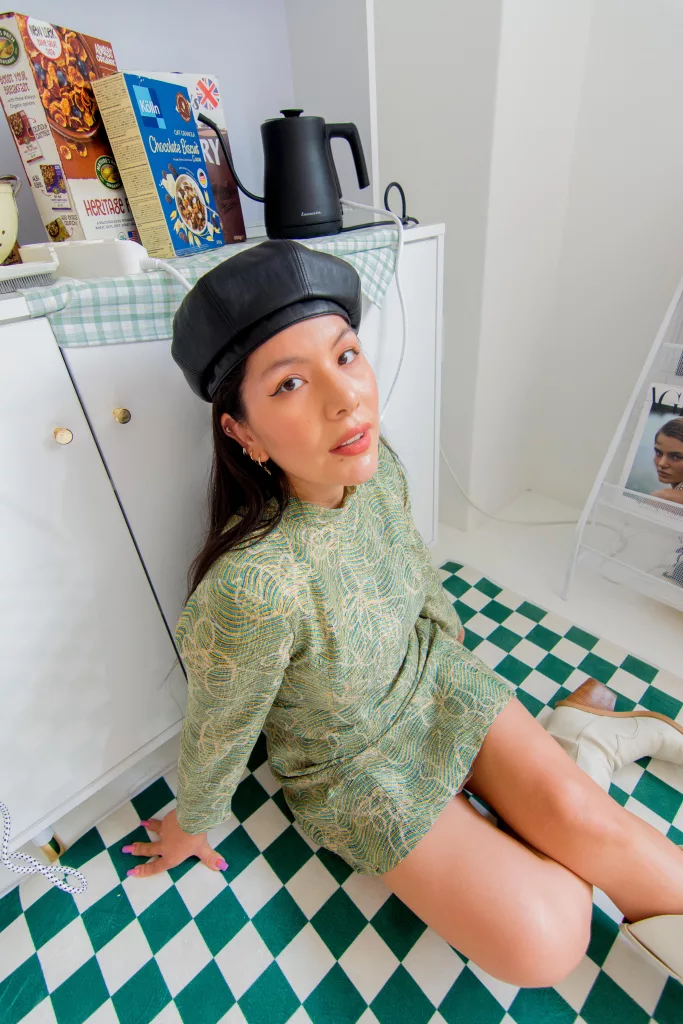
YO’ HOMEGIRL, or Nathalie, is a lifestyle YouTuber based in Seoul, South Korea. Through her content, she hopes to be a friendly face that encourages others to express themselves through clothing, color, and style. Her vlogs include thrift hauls, trend guides, and lessons on color theory. Nathalie spoke with EnVi about her style journey and thoughts on thrifting and mindful consumption.
Upbringing: Ahead of the Trend
Growing up as a first-generation immigrant, Nathalie recalls second hand clothing being integral to her upbringing. When visiting their family in Peru, Nathalie’s family would fill their luggage with pre-loved clothing to give to their family members who needed them. Her family also made frequent trips to their local Red, White, & Blue thrift store in New Jersey. However, back then “thrifting” was just shopping for her.
Nathalie didn’t have access to expensive brand names that were coveted at the time, but this did not deter her love of clothing. She learned that style was more important to her than fashion and that she could truly express herself through whatever clothing was available. “I’m not fashionable. I’m stylish,” Nathalie mused.
Nathalie grew up in a family of creatives. Her older sister went to fashion school and her mom knits, crochets, and sews. Nathalie herself began sewing in high school and later started selling her clothing in university to a local boutique. After learning this skill, Nathalie found herself thinking, “I won’t buy something if I think I can make it myself” while shopping. Although she may not already have the skillset to create the piece she likes the challenge and creativity it takes to try.
Now Nathalie uses her sewing skills to do thrift flips. She explained that using sewing to make slight adjustments to clothes is key to making your wardrobe personalized to you. “When your clothes fit you, it truly makes a world of difference” Nathalie states.
Evolution of Thrifting
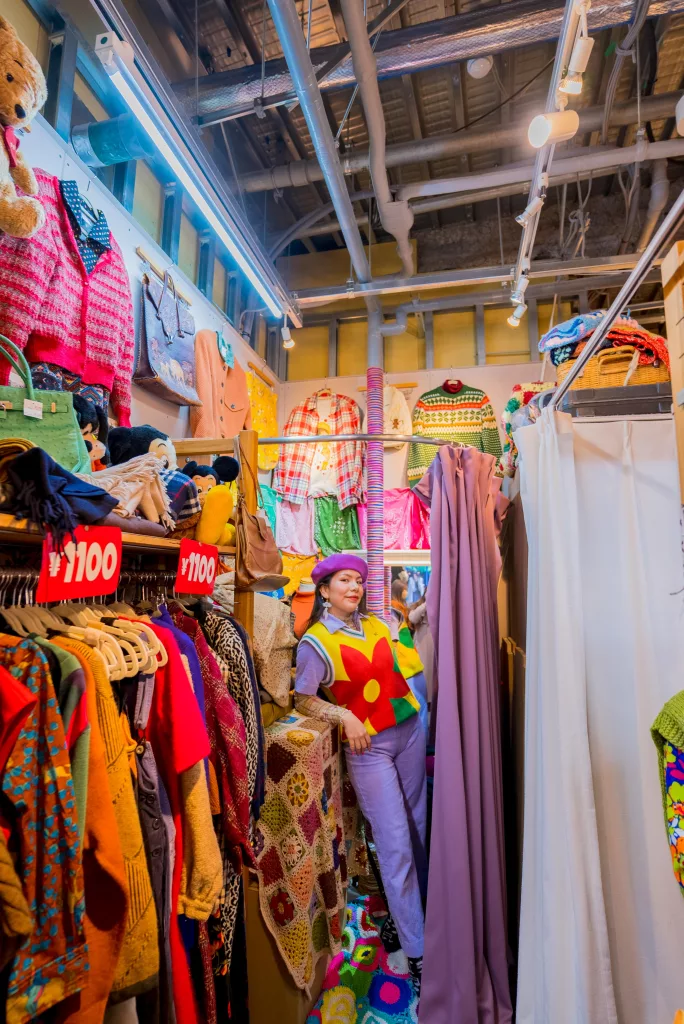
Nathalie has thrifted in Los Angeles, Tokyo, South Korea, and many more cities across the globe. She provided insight on the worldly perspective of thrifting in different countries. When Nathalie first moved to South Korea in 2015, she noticed that the clothing offered in retail stores were mostly one size fits all and didn’t accommodate for different body types. She found that the locally owned ajumma, fashion shops, stores run by middle-aged women or “ajummas” in Korean, with second hand clothing were the only places that had inclusive styles.
Over the years, Nathalie has seen thrifting become more prevalent in large cities like Seoul. When traveling, Nathalie noted that the condition of clothing in Eastern countries was much nicer than in the West. She attributed this to cultural differences, explaining that in countries like South Korea, people donate clothes that they have not worn themselves whereas in the U.S. it is common to donate clothes after long periods of use.
Practicing Mindful Consumption
A common argument against the popularization of thrifting is that people are taking affordable clothing options away from those who need them. Nathalie provided her perspective on this, “There’s also this idea that because thrifting has become so popular—that’s why prices have increased, but it’s not because of the people buying,” Nathalie stated. “It’s good that more people are buying but it’s more so that the businesses increase prices because they know how popular it is.” Additionally, she asserted that the abundance of clothing in the world accounts for the influx of people starting to shop second hand and actually prevents items from piling up in landfills.
Although adopting second hand consumption is more sustainable, it may not address the underlying issues of overconsumption on the part of consumers. Trends come and go in thrifting so it is important to be mindful of your consumption habits. “What’s always good to do first is to look through your own wardrobe, because trends are a cycle and you could already have that trend in your wardrobe,” Nathalie stated.
Moving Forward Mindfully
Shopping sustainably does not have to limit your love of clothing or fashion. Instead, it may open your mind to new styles and skills that will strengthen your personal style. Use the tips and perspectives of Lisa or Des & Ren to help guide you on your path to mindful consumption. Second hand consumption provides a creative outlet and freedom for self expression as well as opportunities to do your part in saving the planet.
